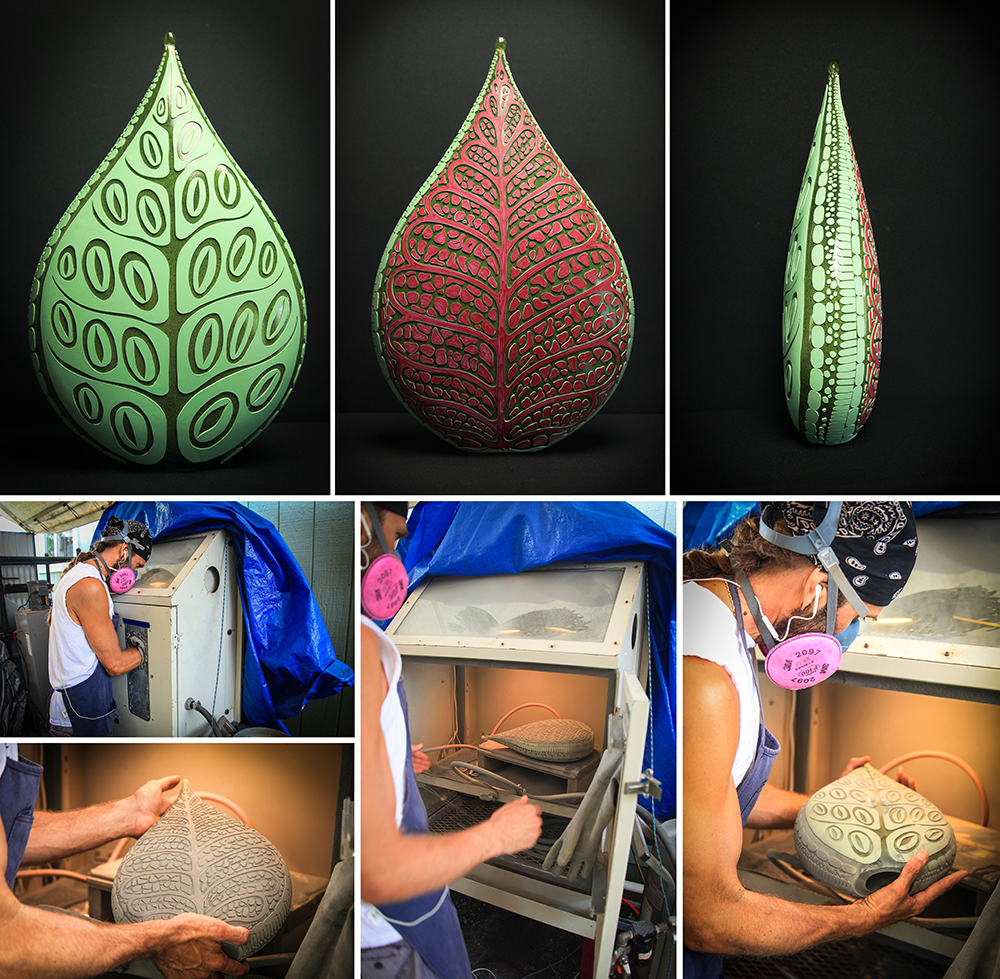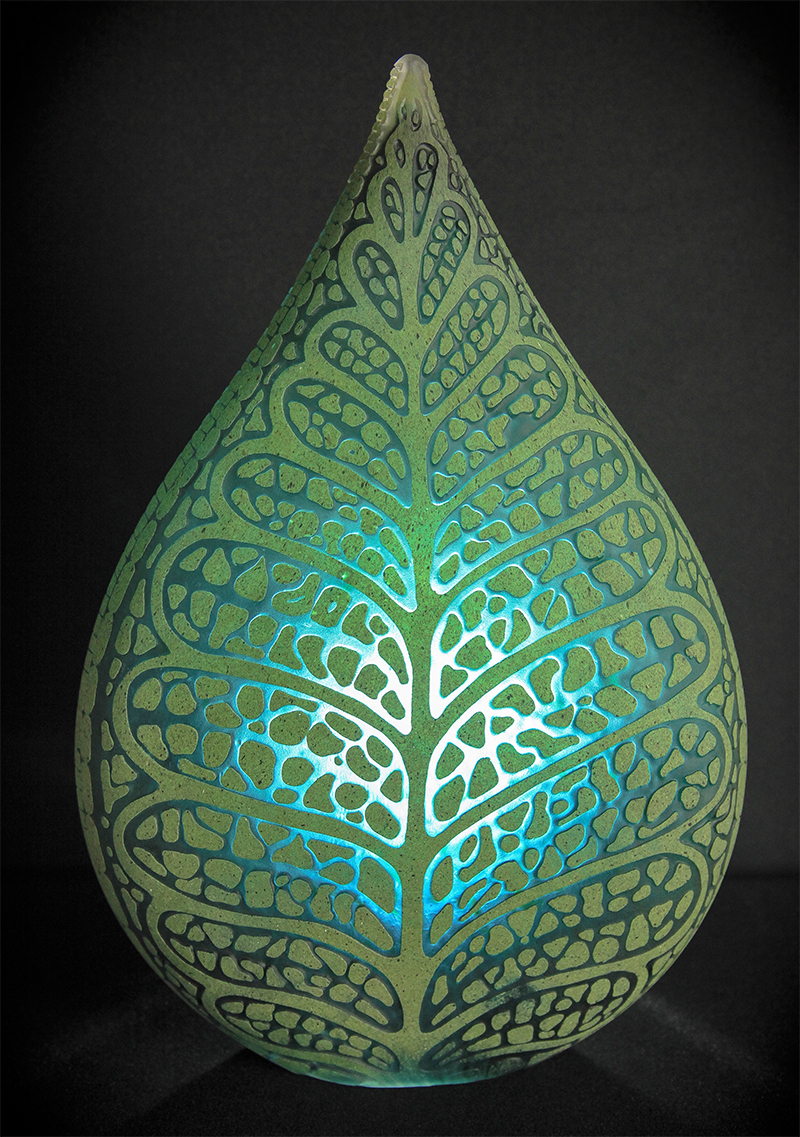Most of you know that my source of inspiration for the last few years, has been what’s most alive and raw on this island: The lava and the Ocean. Although, there is so much more that excites and tingles my creative spark.
Here is a peak, just peak! of what we’ve been up to.
At this stage, a few of the pieces I made and the theme that’s exciting me the most right now: Honey Bees.
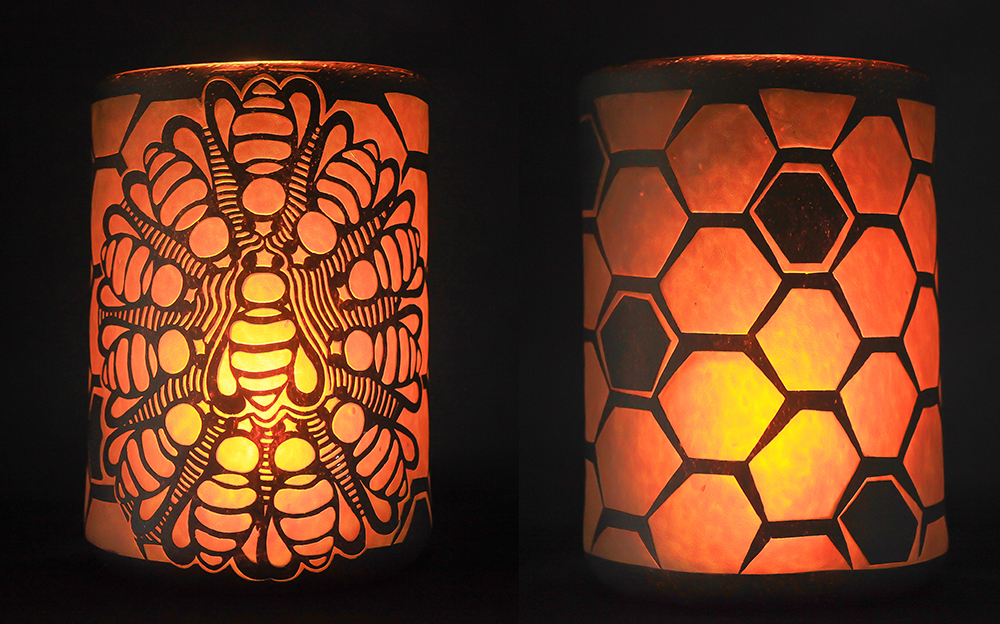
“The Waggle Dance of Bees” vessel – 9″ x 6″
Blown – Carved – Glass
A honey bee performs a carefully choreographed “waggle” dance that instructs the rest of the hive where to find a food source.
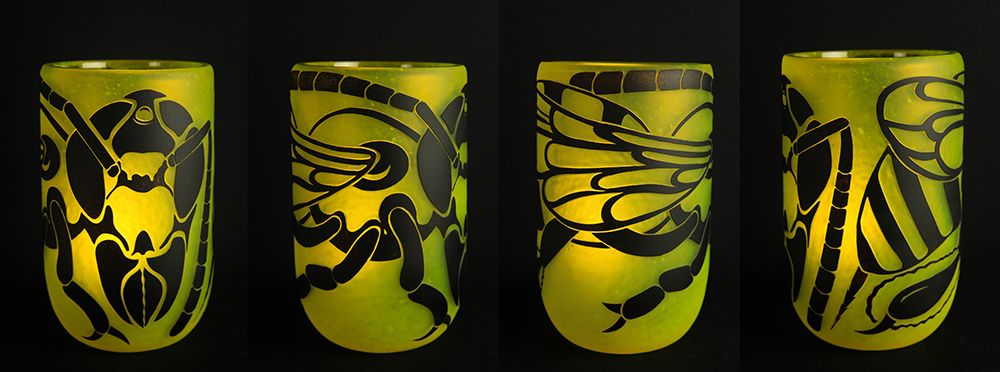
“Queen Bee” vase – 11″ x 7″
Blown – Carved – Glass
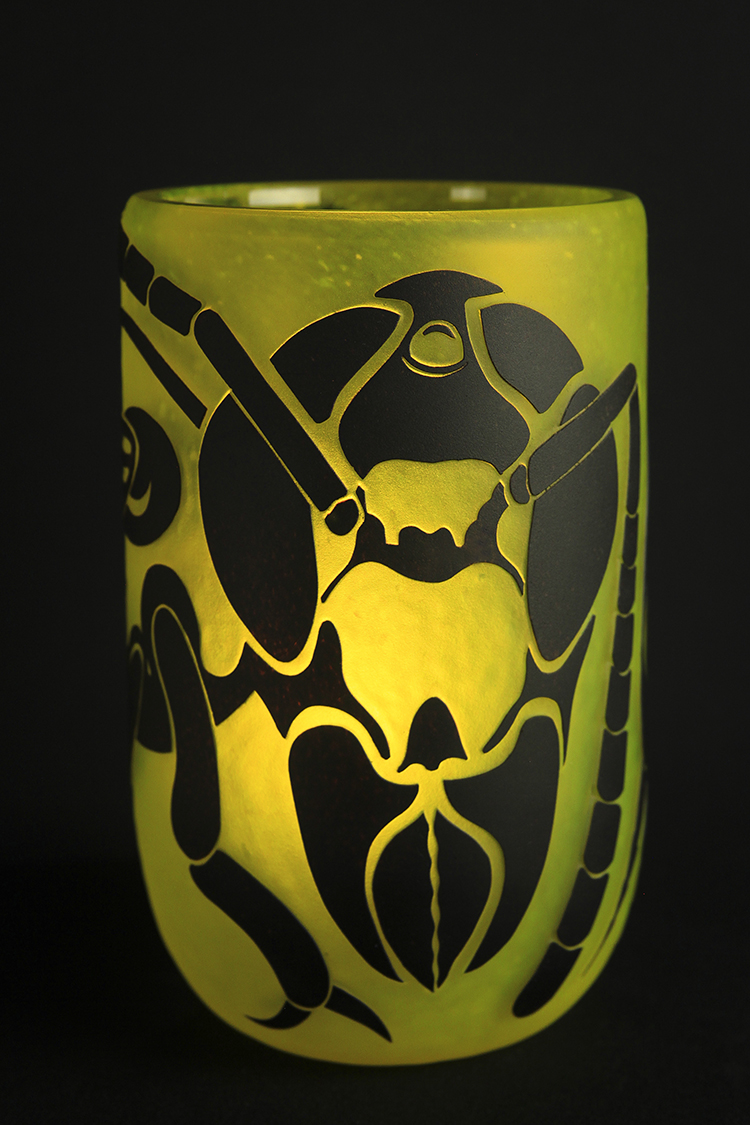
Bees are amongst the most important insects to humans on Earth. Honey bees perform about 80 percent of all pollination worldwide. A single bee colony can pollinate 300 million flowers each day.
These humble, buzzing bugs deserve a huge thanks – for helping provide us with our favorite fruits and vegetables, their delicious honey, and beautiful, flowery gardens!
Many things, are compromising the health of millions of honey bees. The causes of collapse merge and synergise, but we know that the three most prominent causes appear to be: Pesticides, fungicides and habitat loss.
It is our duty for the bees and our own survival, to do anything we can, to help protect our honey bees and other pollinators.
Here are 8 simple things you could do, on a daily basis:
1. Protect bees from pesticides. Keep your lawn and garden pesticide-free. Explore organic solutions and control pests with homemade remedies and ladybugs.
2. Create habitat for bees. Clusters of plants with staggered blooming times provide pollen for bees through the year. Native plants are always best.
3. Provide a year-round, clean source of water for bees. This could take many forms: A rainwater collection or irrigation system or a small garden water feature. Shallow water sources can provide enough water for bees, without creating opportunities for mosquitoes to breed.
4. Provide shelter for bees. Attract wild bees to your backyard by leaving some dead trees or plants that they might nest in.
5. Choose organic. When you do, you support the farm practices that support and nurture our bees. When you spend your cash, you cast a vote.
6. Spread the word about the need to help save the bees! This could range from sharing these tips to chatting with your neighbor.
7. Carefully select your honey: If you are going to buy honey, buy local honey from a beekeeper you trust who cares about their bees. You won’t ingest the pesticides and you’ll help protect the bees. We trust and support our local beekeeper: Paradise Nectar.
8. Sign petitions banning pesticides.
![]() I’m falling in love with the infinite possibilities of Sandblasting and there is so much that’s coming through. Since some of the art pieces I’ve been working on, are not Lava or Ocean inspired (some are, some aren’t), a new website is calling forth to be created. Stay tuned!
I’m falling in love with the infinite possibilities of Sandblasting and there is so much that’s coming through. Since some of the art pieces I’ve been working on, are not Lava or Ocean inspired (some are, some aren’t), a new website is calling forth to be created. Stay tuned!
Other inspiring vessels

“Humpback whale” vessel 9″ x 7″
Blown – Carved – Glass
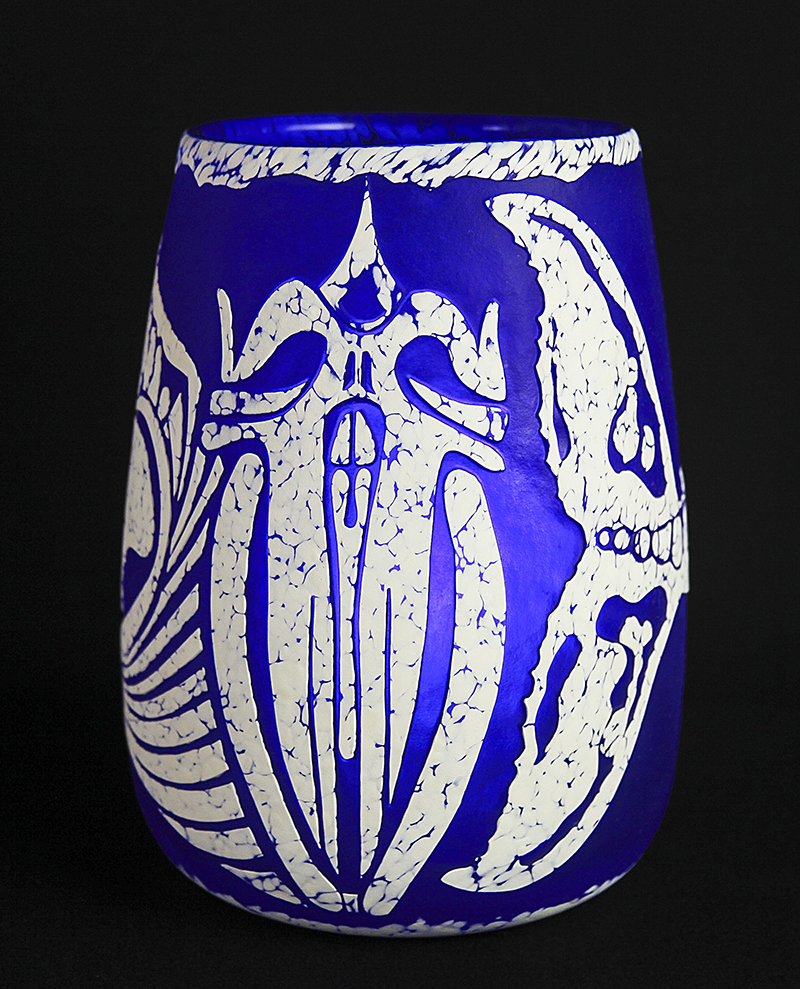
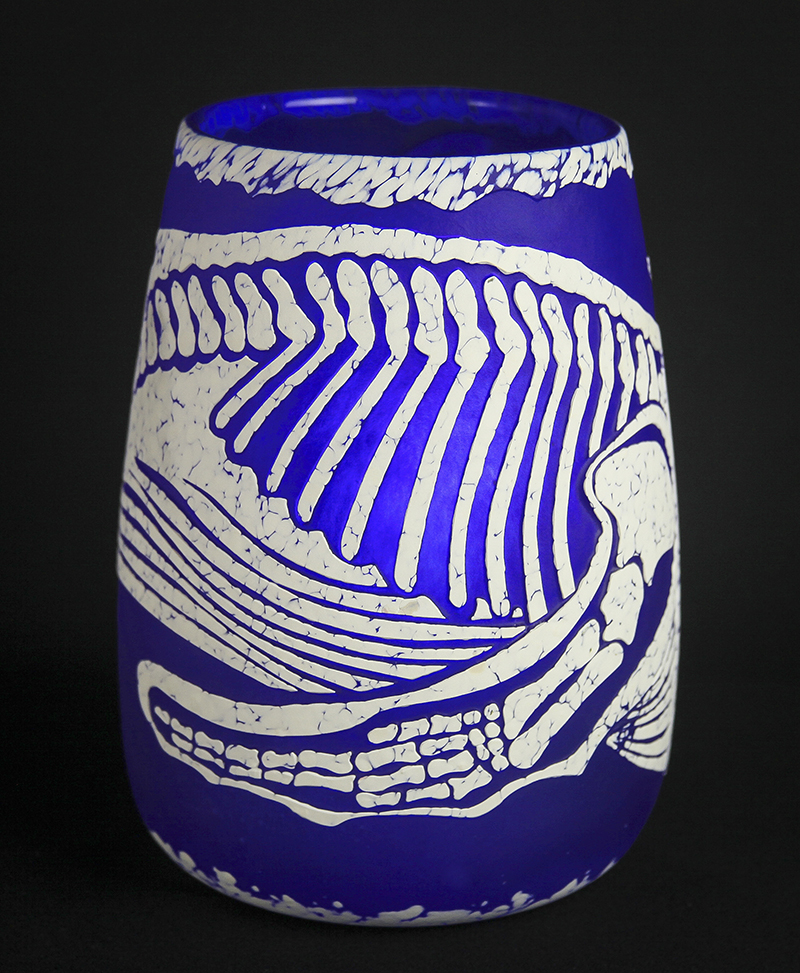
![]()
“Leaf” sculpture 16″ x 11″
Blown – Carved – Glass
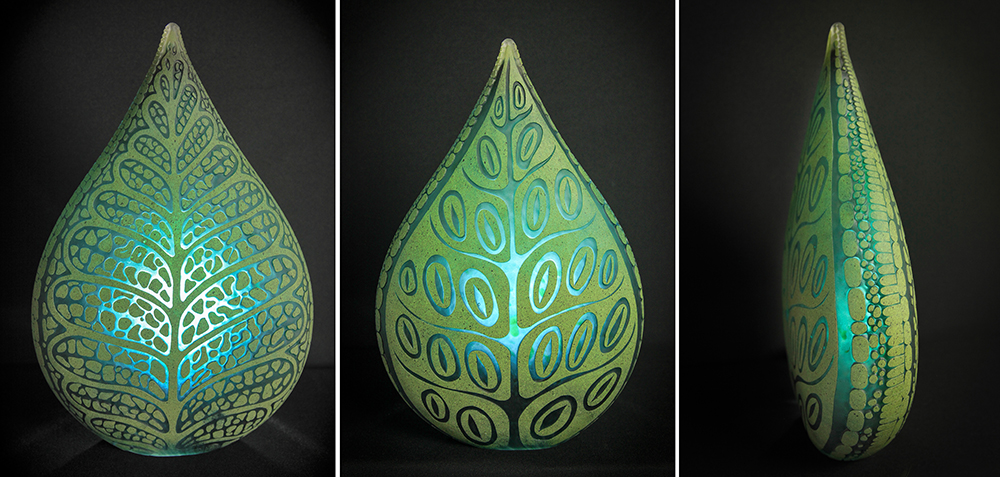
—-
Sandblasting process
